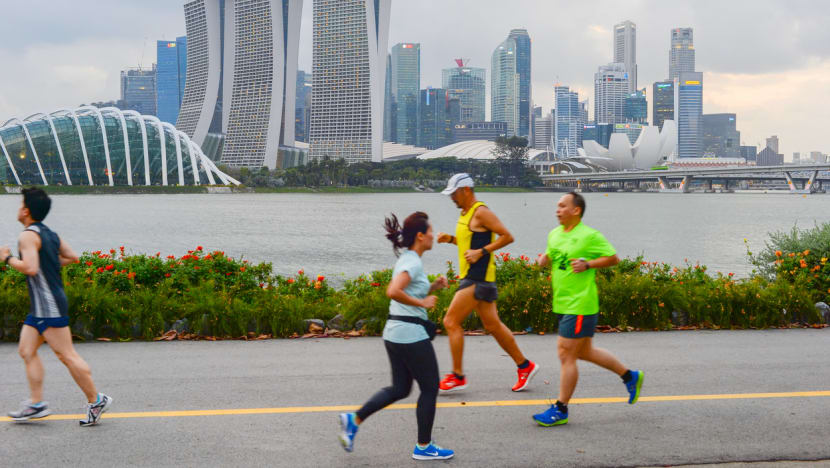Exercise and sports participation among Singapore residents at all-time high: SportSG survey

People running in Singapore. (Photo: iStock)
SINGAPORE: Exercise and sports participation among Singapore residents was at an all-time high in 2022, according to findings of an annual survey by Sport Singapore (SportSG) that was released on Tuesday (Jun 27).
Seventy-four per cent of respondents surveyed last year said they exercised or participated in sports at least once a week. Among them, 44 per cent participated in such activities more than twice a week.
The overall figure of 74 per cent is an improvement from 72 per cent in 2021 and 69 per cent in 2020. It is also sharply higher than the 54 per cent in 2015 - the first year that the National Sports Participation Survey was conducted.
The top five activities among participants last year were walking (40 per cent), jogging (29 per cent), callisthenics (15 per cent), cycling (11 per cent) and swimming (9 per cent).
This is Singapore’s only national survey on exercise and sports participation. It was conducted continuously across the year, involving at least 4,500 residents - both Singapore citizens and permanent residents - aged 13 and above.
Insights from the survey are used to help authorities shape sporting programmes and initiatives for residents.
Speaking to reporters at a media event on Tuesday, SportSG CEO Alan Goh said that the COVID-19 pandemic has had a positive effect on participation levels.
“We saw a lot of participation increase during the pandemic because people had time and they wanted just to have access to facilities,” he said.
“People were at home and there was time to actually focus on sports and we capitalised on it to come up with programmes.”
With more people going back to the office post-pandemic, the challenge will be how to sustain such levels of participation, Mr Goh said.
“My team will just want to continue pushing the limit to see how we can maintain or even increase this participation,” he added.
“I’d like to think that the more we push in this direction, there will be benefits to individuals. They'll also be benefits to our healthcare system if people stay fit.”
SportSG’s strategy group chief Lee Huei Chern said the study has shown that over the years, there is a certain percentage of the population that will not participate in sports and exercise for various reasons.
Moving forward, the agency aims to increase the frequency and quality of exercise and sport among participants.
“We recognise it is high now, we hope to keep it up there, despite all the lifestyle changes that may happen,” she said, adding that the overall survey findings are a step in the right direction.
“It starts us on the right footing towards building a healthy SG (Singapore), there is enough research out there to link physical activities with health outcomes,” Ms Lee said.
The results are also a good indicator of what common interests are, she noted.
“It also gives us opportunities to see what else is there (which) we can provide in terms of programmes, in terms of events, and be assured of (a) certain take-up,” she added.
“That is something that we are encouraged by and I think these are all good potential (outcomes) that we can see with a more active population.”
Editor's note: This article has been amended to correct the proportion of survey respondents who participated in sports more than twice a week.















